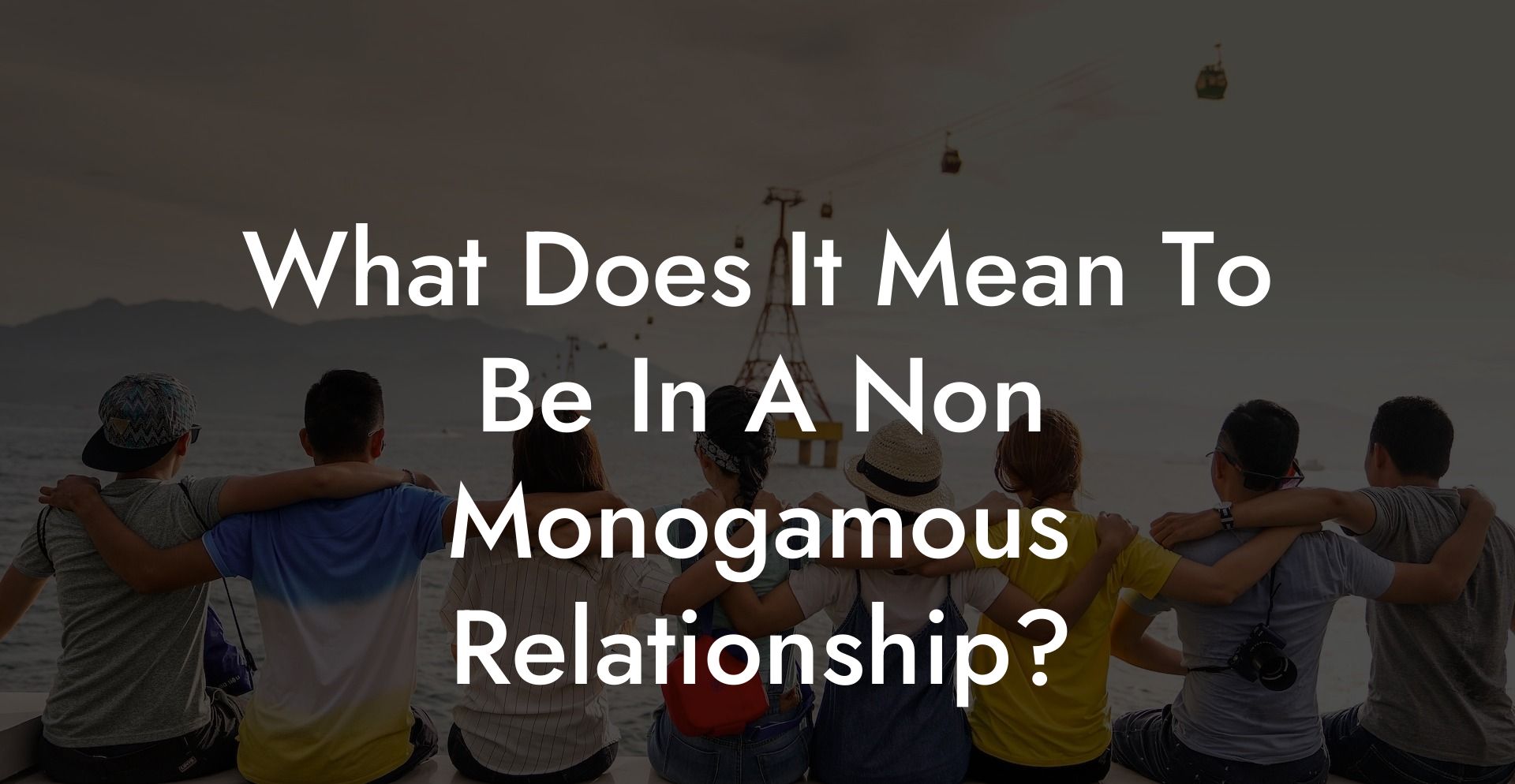As society evolves, so does our understanding and acceptance of different types of relationships. One that has been gaining popularity in recent times is non-monogamy. But what does it mean to be in a non-monogamous relationship? How does it work, and are there any challenges to this type of partnership? In this article, we will explore the intricacies of non-monogamous relationships and help you understand if it could be the right fit for you and your partner. So, sit back and let The Monogamy Experiment guide you through the world of non-monogamy.
What Does It Mean To Be In A Non Monogamous Relationship Table of Contents
In short, being in a non-monogamous relationship means having an intimate, romantic, or sexual connection with more than one person. The term 'non-monogamy' is an umbrella term that includes various forms of relationships, such as polyamory, swinging, and open relationships. Let's delve into these categories to understand them better:
Polyamory
In polyamorous relationships, individuals are open to forming emotional, romantic, and sexual connections with multiple partners simultaneously. These relationships can take different forms, such as hierarchical polyamory (where one relationship is primary, and others are secondary) and non-hierarchical polyamory (where all relationships are given equal importance).
Swinging
Swinging involves committed couples exchanging partners or engaging in sexual activities with other couples. The focus here is solely on the sexual aspect, with less emphasis on forming emotional connections outside of the primary relationship.
Open Relationships
In an open relationship, partners agree to explore sexual encounters outside their committed relationship while maintaining an emotional connection exclusively with each other.
While these categories may help to clarify some aspects of non-monogamy, it is crucial to remember that relationships are unique, and individuals and couples may create their own rules or boundaries within these frameworks.
Example
Emma and Tom have been together for three years and have always been monogamous. Recently, though, they discussed their interest in exploring new experiences and agreed to gently transition into an open relationship. They established boundaries, such as only engaging in sexual activities with others when on business trips and being completely open and honest with each other about their encounters.
After a year of implementing these guidelines, they found that their bond had grown stronger, and they were more open about their desires and needs. Emma and Tom's journey demonstrates that non-monogamous relationships require continuous communication, honesty, and trust.
Navigating the world of non-monogamy can be both exciting and challenging, but it ultimately comes down to communication and mutual respect. Understanding the different aspects of non-monogamous relationships is the first step towards finding out if this lifestyle suits you and your partner. Remember, there is no one-size-fits-all approach to relationships, and what works for one couple may not work for another.
Take some time to explore other guides on The Monogamy Experiment for more valuable insights and advice on relationships, monogamy, and everything in between. Feel free to share this article with friends and loved ones who may be curious about non-monogamous relationships or are considering entering one themselves. Knowledge is power, and staying informed can help everyone make the best choices for their own unique relationship journey.













